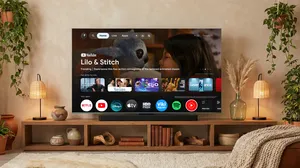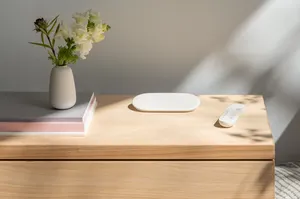5 design details to check out in new Nest Thermostat and Google TV Streamer

The fourth-generation Nest Thermostat and all-new Google TV Streamer are here. For both products, getting the design right was a critical part of the development process.
“Nest is so iconic. It’s been such a pivotal product in the industry,” says Ivy Ross, Chief Design Officer for consumer devices. “I think it took a lot of courage to reimagine its design because when it launched, it was really the start of a new era where smart home devices weren’t just functional, but beautiful, too.” Design was just as important for the Google TV Streamer — a significant evolution from its previous form, the Chromecast. “We were bringing it out from behind the television set, so it needed to be something people are happy to have on their credenza,” says Isabelle Olsson, VP for home design.
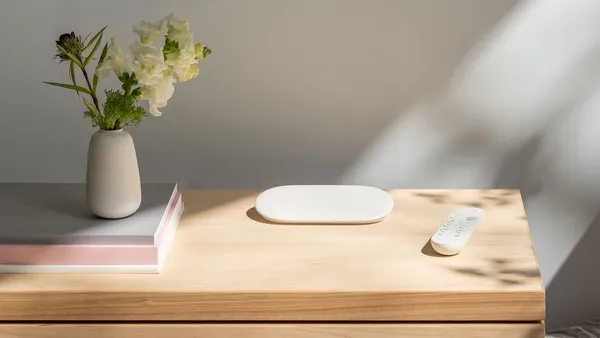
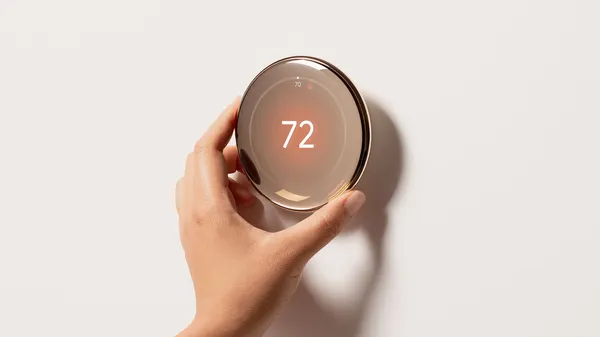
Below, we asked Ivy and Isabelle to take us through some of their favorite design elements of these new devices, available now.
The shape and movement of water inspired the Nest Thermostat’s domed display.
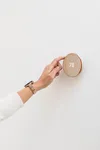
The design team kept coming back to water as a source of inspiration during their Nest Thermostat creation process — you can see that it has a droplet-like effect to it. Designers studied the movement and structure of water by letting droplets fall onto steel plates and seeing how the liquid reacted, and watching how light reflected off the tiny pools of water. “It helped us find the optimal curvature for the thermostat,” Ivy explains. Ivy also points out that the thermostat and Pixel Watch have a similar shape and form: “I love the beautiful connection there.”
Smoother curves, invisible bezels and a lighter touch create a modern look that lasts.

When you have a product that people are comfortable with and love, it’s important not to simply change it for the sake of changing it, Isabelle explains — instead, designers wanted to “dial up” the Nest Thermostat’s best qualities (no pun intended). “The curves are smoother, the profile is thinner and the bezels are rendered invisible ,” she explains. “The result is that it feels and looks more like one solid piece instead of a bangle around a separate centerpiece.” It’s a combination of design choices that will make it feel modern in homes for a long time. The new design also allows you to only use your fingertips to rotate the thermostat if you want, whereas the previous generation required your whole hand to turn the dial. It allows for a slightly lighter touch, but delivers the same satisfying interaction, Isabelle says.
A longer, more ergonomic remote feels even better in your hand.

The Google TV Streamer remote was another piece of hardware the team refined without overhauling. “People really like the remote, but we just thought, ‘Where can we do better?’” Isabelle says. The new remote is slightly longer, making it just that much easier to handle — this also allowed them to move the volume controls from the side to the top surface, a more ergonomic and intuitive design. Its curvature is refined for a better feel in hand, and it also doesn’t wobble when it’s set down.
Aesthetic updates let the new devices fit into your home.

For both Google TV Streamer and the new Nest Thermostat, designers focused on the idea of making technology that fit into a home’s aesthetic. For example, Isabelle says, the streamer has a slight slant, making it appear thinner and lighter — this gives it a low profile below a television and doesn’t pull your attention away, regardless of the positioning of your TV. “So if someone has to have their television sit lower on the wall or on a table, the streamer isn’t in the way,” Isabelle says. “We have to consider all of the different ways a living room is set up.”
The thermostat also uses advanced sensors to activate the screen to wake up when it senses someone approaching. It feels magical as it lets you see the most important information from a distance, but as you get closer, it reveals a more detailed view, which is also completely customizable. “When you’re not using it, there’s an option to set up the thermostat to look like an analog clock,” Ivy says. “You wouldn’t realize what it is.”
Time in the design studio helped designers to make sure these devices would complement a home’s interior — but it wasn’t just any lab. “We have a garage devoted to testing home products and we have a living room setup there,” Ivy says. Designers — as well as user experience teams and other groups — used these garages to try to simulate how people would use their devices in real settings. And they took device prototypes into their own homes as well. “Context really matters!” Ivy explains. “We’ve even done experiments where people use a device in a more traditional lab space setting versus taking a device home, and the results are so different.”
The Google TV Streamer’s new shape is an upgrade for function and form.

In the case of the new Google TV Streamer, engineering needs helped inform the design. “We didn’t just suddenly wake up and think, ‘We need to make a set-top box!’” Ivy says. But the designers were challenged to create something beautiful and versatile that would come out from behind the screen, where the latest Chromecast had been. “A bigger scale for the streamer from the previous generation meant it couldn’t just hang off the back of the TV like it did before,” Isabelle says. But going bigger was crucial; it would deliver better performance and usability, and that drove designers’ process of turning challenges into opportunities.
They worked to minimize the visual and physical heft of wires while also keeping a lightweight feel. “We came up with this floating effect that helped us hide a lot of the bulk of the cables,” Isabelle explains. The oval shape also made the device extremely stable, so extra weight wasn’t necessary to make sure it sat solidly. The shape also maximized heat dissipation to protect its internal components. “I love to say that this beautifully sculpted shape came out of a study of function,” Ivy says. “Designing is about solving challenges, and in this case, a form emerged that solved a lot of functional, technical challenges at the same time.”

